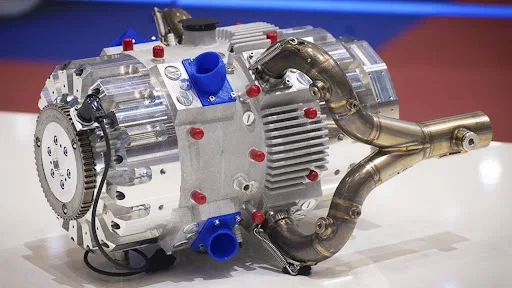This motor lacks a cylinder head. Additionally, there is no valve, camshaft, or crankshaft. That is the reason it's nothing unexpected that this motor weighs in at only 85 pounds. Due to what the company refers to as a single-stroke combustion cycle, it still manages to produce 120 horsepower with just half a liter of displacement. Wonderful to toss into a Miata, it just so happens.
In spite of having four chamber banks, the INNengine (contingent upon its design) really has eight cylinders. This is on the grounds that the motor is a gone against cylinder engine, implying that every cylinder's pressure stroke is performed against a subsequent cylinder set in a similar chamber bank as opposed to a static chamber head. It still just has four burning chambers, however, and that implies it sounds like a four-chamber motor.
This motor doesn't have connecting rods, at least not in the traditional sense. All things considered, the cylinders sit on rollers that ride against a lobed round plate which can be acclimated to influence the motor's timing and pressure proportion. The piston accelerates towards the top dead center as the lobe reaches its peak, where fuel is directly injected into the cylinder and the mixture of compressed air and fuel is ignited by a spark plug.
The mechanical setup likewise takes into account better motor equilibrium. This means that the typical disadvantages of an internal combustion motor, such as noise, vibration, and harshness, are reduced to a minimum.
The piston is pushed back against the plate when combustion occurs, causing the plate to rotate. This movement is synchronized between every portion of the engine through a common shaft — meaning, no additional timing parts. The two cylinders in a similar chamber bank mirror each other's developments precisely.
An intake and an exhaust port are exposed when the pistons reach the bottom of their strokes. Scavenging is the process of timing one piston to reach bottom-dead-center slightly earlier than the other. This lets exhaust gases escape from the exhaust port and create a vacuum inside the cylinder. Outside air is then pulled in through the admission port as the ignition result is removed. This really gives the cylinders twofold obligation, playing out the work ordinarily dealt with by valves in a regular ignition motor — and that implies that the normal downside of direct infusion, carbon-bound valves, is a relic of times gone by.
Power is likewise yield at the two closures of the engine, implying that a gearbox could be associated with either (or both) finish of the engine to put the capacity to a vehicle's wheels.
Presently, consider this: This motor has more than one stroke. It has a pressure stroke and exhaust stroke, making it a two-stroke cycle. INNengine recognizes this and has said that it marks the engine as such on the grounds that individuals would expect that a two-phase motor would have to have oil blended in alongside fuel. Most two-strokes do. The organization says that the one-stroke name was recommended by an "outer ICE establishment" and they viewed it as "infectious," so INNengine stayed with it.
Is it likely that we'll see INNengine's burning tech controlling the wheels of a vehicle? Probably not, at least not when it is connected to a gearbox directly. Although INNengine's demo video's Mazda was a great idea, the company seems to be focusing on the EV market as a range extender, given where the industry is headed in the end.
In the event that the tech had appeared years and years prior or more, maybe there would have been an opportunity of reception in the fundamental market (signal Felix Wankel's famous rotational). But in this day and age, tinkering with perfection seems unlikely to take off, especially given that combustion technology may be on its way out. Because of this, a range extender seems like the most logical use of this technology, especially if we want electric vehicles that are lighter and more affordable.




No comments:
Post a Comment